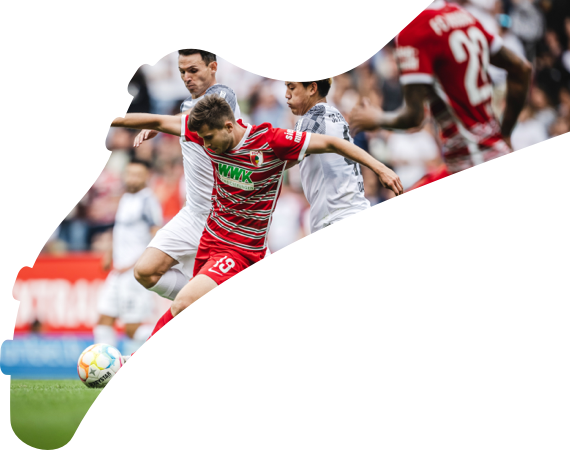
Guardiola vs. Heynckes: More flexible, more risky
Cologne - On 24 June 2013, Pep Guardiola stepped into the FC Bayern München hotseat vacated by the legendary Jupp Heynckes, who had guided the record titleholders to an historic treble of Bundesliga, DFB Cup and UEFA Champions League titles the previous season. While both tacticians have enjoyed unprecedented success in their careers, their coaching philosophies could hardly be more different.
More titles for Pep
Guardiola had everything to lose when he took over the reins at the Allianz Arena last summer: Bayern’s treble-winning campaign was the most successful in their history - the best the Catalan could do was emulate that incredible feat. He certainly had little hope of outdoing his predecessor. According to the statistics, however, there isn’t an awful lot to choose between Guardiola’s FCB and Heynckes’ side.
In 2012/13, Heynckes’ Bayern set a new Bundesliga points record of 91. Guardiola’s charges only missed that particular target by a single point last term, while the previous best mark of 81 - set by Borussia Dortmund in 2011/12 - was some way off the number of points accumulated by Bayern in both those seasons. Though die Münchner’s hopes of becoming the first team in history to retain the Champions League ended with a 4-0 semi-final second-leg defeat to Real Madrid CF on home soil, Guardiola was able to get his hands on the UEFA Supercup and FIFA Club World Cup, as well as the Bundesliga and DFB Cup. Not even Heynckes won that many titles the previous year.
“They’re both great coaches, but they’re both completely different,“ revealed Franck Ribery, whose performances under Heynckes earned the Frenchman the UEFA Best Player in Europe Award in 2013. One of those differences between the two tacticians is their preferred formation: While Heynckes set his charges up in a 4-2-3-1 system, Guardiola has never been afraid to tinker with his tactics, even during matches. At times the Catalan prefers to employ two defensive midfielders, while on other occasions he uses just one holding player in front of the defence. Recently, the former Barcelona FC coach has even gone into games with a back three.
No possession for possession’s sake
One man who encapsulates Bayern’s flexibility under Guardiola more than any other player is captain Philipp Lahm, who has blossomed in a new defensive midfield role since the beginning of last term. Though it took the former Germany skipper a while to become accustomed to the wider spaces in midfield (he won only 57 per cent of his challenges last season, compared to 62 per cent under Heynckes), he was able to improve his pass completion rate from 88.8 per cent to 91.1 per cent.
It’s common knowledge that Guardiola’s game relies heavily on possession of the ball. While Heynckes’ team averaged 60.6 per cent possession, Bayern enjoyed 66.6 per cent under the 43-year-old’s tutelage last season. His side also averaged more than 100 passes per match, despite Guardiola’s admission that he “hates just passing the ball around for the sake of it, that [kind of] tiki-taka“. He doesn’t mind seeing his players lose the ball in the final third, as long as they regain possession immediately in order to ruthlessly expose the momentary lack of organisation in the opposition defence.
Holding a high line
For this approach to bear fruit, Guardiola needs as many players as possible in the opponents’ half at any given time. The 4-1-4-1 formation he used so frequently last season allowed the likes of Toni Kroos, Thiago Alcantara and Bastian Schweinsteiger to push forward at every opportunity, while the 3-3-3-1 system he’s opted for this year encourages the full-backs (usually Juan Bernat, David Alaba or Lahm), to attack as often as possible, so much so that they almost turn into wingers.
That offensive strategy only works, however, if the centre-backs play a very high line. On average, Guardiola’s centre-halves stand 40.3 metres from their own byline, compared to 36.1 metres when Heynckes was in charge. “I only want us to move forward a few metres, so we can’t get caught out of position if we lose the ball. Every team in Germany is capable of hitting you with a counter-attack that takes your breath away,“ warned the Catalan recently.
“Your achievements will remain sacred”
This approach also allows goalkeeper Manuel Neuer to adopt the sweeper role which the 28-year-old mastered to perfection in the . Indeed, Guardiola’s system has several advantages for the former FC Schalke 04 stopper. “I receive the ball more frequently and can contribute in the build-up, which helps my overall performance,“ explained Neuer. However, Bayern’s new formation also brings with it plenty of risks: Bayern have conceded more goals as a result of the opposition passing their way past the backline (14) than Heynckes’ side (5) in 2012/13. The latter relied more heavily on switching defence into attack as quickly as possible, and as a result Bayern scored almost three times as many goals from counter-attacks than they did in 2013/14.
If Guardiola’s Bayern drop fewer than 26 points this term, the Spaniard will have won more Bundesliga points than Heynckes’ team accumulated during his two-year reign. Not that the two coaches have anything to prove to each other, though. When they came face to face at the Sport-Bambi awards last year, Guardiola told his predecessor: “I’ve inherited a perfect team. I can’t top what you did. Your achievements will be sacred in the history of football. For me personally, you are a real role model.”
This article is part three of our ‘Guardiola’s Bayern’ series, which began this week.


